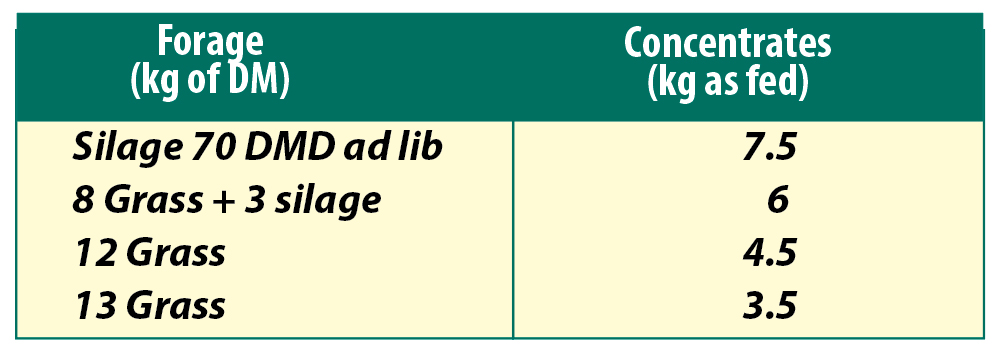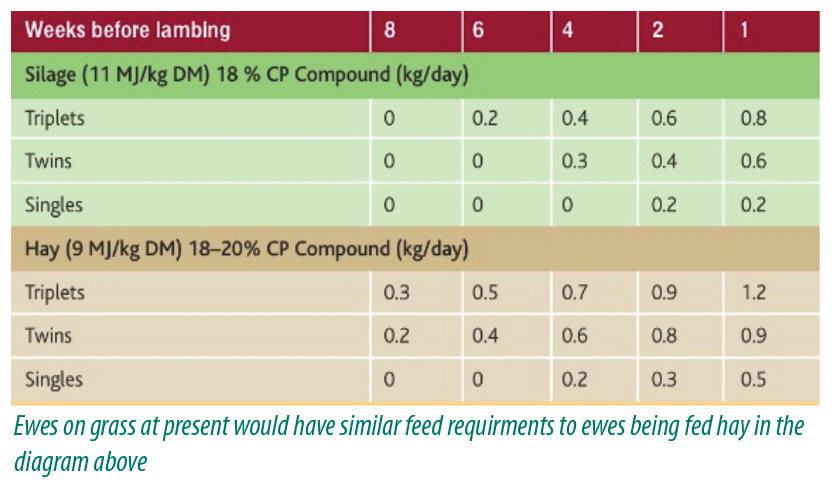Managing The Freshly Calved Cow
With the spring calving campaign now well under way dairy farms are currently very busy places. With so much to do it is very easy to become immersed in calving and keeping cows and calves alive and healthy. The problem is that by the time calving is over the potential milk yield and fertility for the year has already been determined. Peak yield occurs 6-8 weeks after calving, while peak intake does not occur until 12 weeks, an un-avoidable energy gap occurs here as a result. It is cows with the highest genetic potential to milk that will continue to lose weight for the longest period of time. This is why the highest yielders are often the last to go back in-calf.
Minimising weight loss and hitting a high peak lactation yield is crucially important in achieving high submission rates and high lactation yields. Where weight loss exceeds 0.5 BCS, 3 week submission rates can drop to as low as 40%. As lactation yield is a function of peak yield, every 1kg rise in peak yield results in a 200-225kg rise in lactation yield. Achieving both of these objectives revolves around intake.
Maximising Intake
The key to maximising intake as quickly as possible is avoiding digestive upsets, namely acidosis and sub-acute rumen acidosis (SARA). Dry cows are often fed lovely consistent TMR rations containing straw, minerals and meal. They then calve down and are turned straight out to grass. This grassy diet contains less effective fibre, is lower in dry matter and offers a poor supply of quality protein. Early grass is also centred on one or two big feeds, particularly when on-off grazing is necessary.  These conditions are conducive to fluctuations in rumen pH (acidosis) and suppressed intakes. An appropriate transition period to grass will reduce the incidence of issues like acidosis and displaced abomasum but it does create extra workload. If possible leave cows in for the first ten days after they calve and slowly introduce concentrates. The tried and tested out by day and in by night is a very cow friendly way of introducing grass. Concentrates need to be very specific to this recently calved cow. Our dairy rations contain an ideal balance of starch and soluble fibres that provide rapid energy for protein production in the rumen and slow release energy for rumen health.
These conditions are conducive to fluctuations in rumen pH (acidosis) and suppressed intakes. An appropriate transition period to grass will reduce the incidence of issues like acidosis and displaced abomasum but it does create extra workload. If possible leave cows in for the first ten days after they calve and slowly introduce concentrates. The tried and tested out by day and in by night is a very cow friendly way of introducing grass. Concentrates need to be very specific to this recently calved cow. Our dairy rations contain an ideal balance of starch and soluble fibres that provide rapid energy for protein production in the rumen and slow release energy for rumen health.
Protein
Protein is critical in early lactation as cows are mobilizing body fat but their ability to mobilize body protein is very limited. An over-all dietary protein content of 17-19% is recommended, of which 30-35% of this should be ruminally undegraded.
The inclusion of Hypro Soya in our ration ensures a supply of quality ruminally undegraded protein. Protein always drives milk and is an appetite stimulant, feed an 18-20% ration in early lactation.

As a rule of thumb feed an extra 1kg concentrates for every 2 litres of milk yield above 28 litres.
EWE NUTRITION PRE AND POST LAMBING
Lambing has kicked off for some early season flocks with the later mid-season flocks not being too far behind. Weather conditions have been tough enough on early lambers' and turning lambs out in the days after birth was getting delayed in most circumstances.
For farmers that have ewes feeding lambs on grass or famers that are feeding ewes on grass in the run into lambing they need to be vigilant that ewes are maintaining themselves in good condition.
It can be very easy for ewes to slip into a negative energy balance at both pre and post lambing due to the harsh weather and ground conditions at present. If this occurs there is a number of different health problems that are associated with it for both ewes and lambs. With ground conditions the way they are at present ewes will struggle to meet their energy requirements from grass alone with the main areas to be monitored is ewes with lambs at her feet and ewes in the last five to six weeks of pregnancy. Naturally ewes will loose condition after lambing with the onset of milk production but keeping this below one BCS is recommended. After lambing ewes feed requirements increase dramatically in early lactation, particularly those suckling two or more lambs. Peak lactation generally occurs after 3 weeks so ewes should be kept in good condition to prevent any unnecessary health issues that might arise for ewes and lambs. To ensure this 1kg of concentrates a day should be fed until there is an adequate supply of grass. Drummonds ‘Supreme Ewe 18’ ration is ideal for feeding on after lambing and will give the ewes the energy required during peak lactation to keep on condition and produce good quantities of milk once it is fed at the right rates. For ewes in the run into lambing that are on grass concentrates might need to be added to the diet earlier than normal to ensure she is meeting her feed requirements.

All our Drummond’s branches are fully stocked with all your lambing needs and our counter staff will be on hand to help with any of your needs. If you have issues or queries around lambing this year feel free to get in contact with any of our technical staff.

